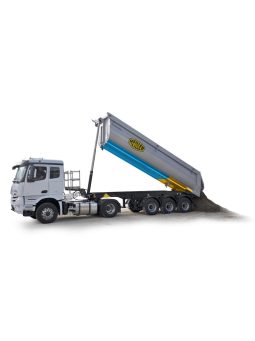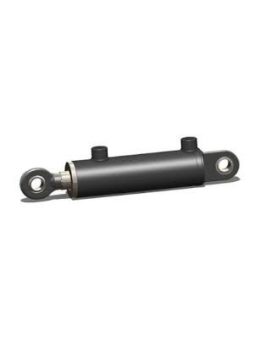Hydraulic cylinders
Hydraulic Cylinders
We primarily offer telescopic tipping cylinders, available in both underbody and front-mounted designs. We receive genuine Meiller cylinders directly from the manufacturer. We also offer repair, refurbishment, or replacement of old cylinders with new ones.
For municipal vehicles, we also recommend double-acting cylinders.
Request an offer from our expert today!
Hydraulic Cylinders
Like many other hydraulic components, hydraulic cylinders can be categorized in various ways.
Based on their operation, there are double-acting, single-acting, and telescopic cylinders. Double-acting cylinders are widely used for exerting linear force in both directions, such as for moving crane booms, rack-and-pinion mechanisms, and stabilizing systems. In contrast, single-acting cylinders only exert force in one direction, with gravity or a spring returning them to their original position.
Telescopic cylinders—sometimes referred to as "cannons" by haulers—are typically single-acting, though in some cases the final stage may be double-acting for geometric reasons. These cylinders have a significantly longer stroke relative to their installation size. In tipper vehicles, the stroke can be as long as 9 meters, with up to 6 or 7 stages.
Tipper vehicle bodies can either tip in three directions with an underbody telescopic cylinder, or tip only backward using a cylinder mounted on the sidewall, known as a front-mounted cylinder.
An important parameter when operating hydraulic cylinders is the working pressure. Lower pressure can be generated with a lower-capacity pump, which can reduce costs. However, lower pressure requires a larger cross-section to achieve the desired lifting force, meaning a larger cylinder is needed, which requires more oil. This, in turn, increases the time required for operation, or a larger capacity or faster pump is needed. Larger cylinders also require a larger hydraulic tank, as the hydraulic oil pushes out the cylinder’s stages, filling the cylinder’s volume. A small underbody cylinder might only need 30 liters of oil, but a front-mounted cylinder could require up to 150 liters to utilize its full stroke.
Hydraulic cylinder manufacturers historically produced cylinders with consistent pressure ratings. For example, Meiller, Neumeister, Penta, and Georg have used high-pressure systems (around 250-275 bar). Edbro, on the other hand, often only allowed 150 bar for its cylinders, while Hyva, Nummi, and Binotto prefer lower pressure ratings, up to around 180 bar. Nowadays, with advancements in steel quality and manufacturing technology, many manufacturers are upgrading their low-pressure systems to higher-pressure ratings, aiming for a more unified market. As a result, the old classification by pressure level is becoming less relevant. However, in high-pressure systems with large-stroke telescopic stages, there is a significant risk of deformation—such as barrel distortion—due to the long internal surface and pressure. If the hydraulic system is set above the manufacturer’s recommended pressure, the oil can force out the seals, causing the platform to collapse, potentially leading to severe damage or injury. This high pressure typically occurs when the telescopic cylinder reaches its end position ("bottoms out"), which is why it’s essential to stop the tipping before reaching the full stroke or to limit the stroke using end-position stops for safety.


